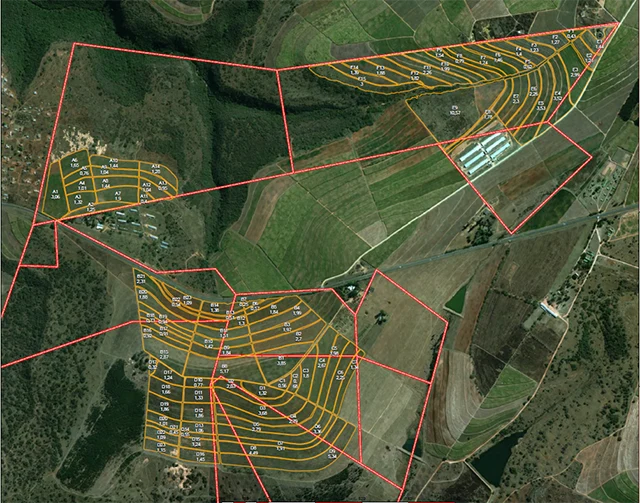
Farmers and scientists are using data from satellites and drones more and more to help monitor crops, estimate yields, and identify areas impacted by pests or diseases. One powerful mechanism derived from satellite imagery is a vegetation index (VI), which helps highlight green (healthy) vegetation so that vegetation is readily discernible from soil and water.
A widely used VI is the normalised difference vegetation index (NDVI), which is calculated using special light sensors that measure how much red and near-infrared light plants reflect. Healthy plants reflect more near-infrared light and less red light. NDVI uses this difference to tell us how healthy the plants are.
NDVI values range from -1 to +1: Values close to +1 mean the plants are very healthy and green. Values between 0 and 0.33 suggest the plants might be stressed or unhealthy. Values below 0 usually mean there’s no vegetation at all – just bare soil, dead plants, or empty land.
The NDVI is thus often used to characterise canopy growth (vigour), with higher NDVI values correlated with high vigour. Because of this, NDVI is a great way to get a general idea of how well crops are growing. Changes in the NDVI may be interpreted as a change in the health status of the crop.
However, NDVI alone cannot tell you exactly what the problem is. That’s why experts often use it together with other similar indices that focus on such factors as water levels, plant moisture, or leaf pigments. They also consider extra information such as climate data and plant characteristics to better understand and manage crop health.
In short, NDVI is a useful early-warning tool that helps spot unusual changes in crop health, but it works best when combined with other data to figure out exactly what is going on in the field.
SASRI is employing the NDVI and other VIs to develop models for identifying anomalies in fields, and to detect pests and diseases such as YSA. SASRI is testing the use of imagery from satellites and drones, and data from hand-held devices. Employing VIs enhances our ability to detect anomalies in a field, compared with using only the imagery or field data. The development of an operational monitoring tool using VIs derived from remotely sensed data could form an integral part of pest and disease management programmes.


